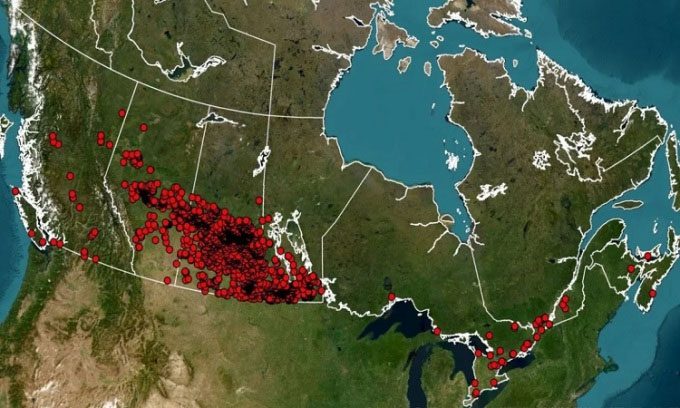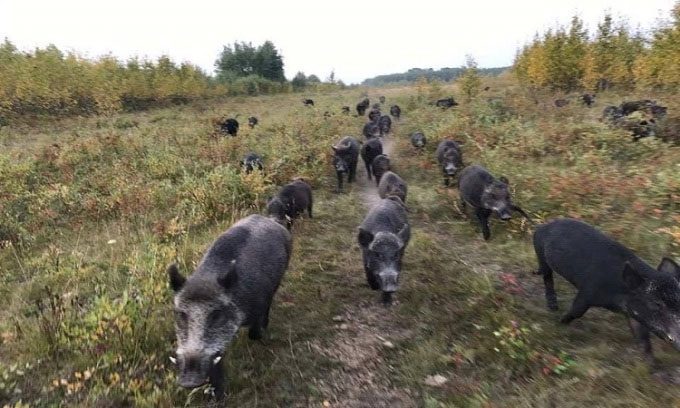The population of super pigs in certain areas of Canada, such as Manitoba and Saskatchewan, has risen to the point where eradication is no longer feasible.

Map of super pig sightings in Canada. (Photo: CWPRG)
Images from the Canadian Wild Pig Research Group (CWPRG) highlight the growing issue of “super pigs” in the country. Currently, super pigs are threatening to invade the northern regions of the neighboring United States, Interesting Engineering reported on April 4. Super pigs are not a new species or genetically modified organisms. According to Ryan Brook, a researcher at CWPRG, they are called super pigs because of their large size and ability to survive in Canada’s frigid climate. A super pig can weigh over 300 kg and endure winter temperatures as low as -50 degrees Celsius by burrowing two meters deep under the snow. They currently inhabit a vast territory of nearly 1.7 million square kilometers.
Super pigs result from breeding experiments between wild boars from Europe and domestic pigs in Canada. Breeders aimed to diversify the livestock industry and create a species capable of surviving harsh winters. About two decades ago, the demand for hybrid pigs declined. Canadian farmers released hybrid pigs or allowed them to escape into the wild. As breeding helped super pigs adapt well to the wilderness, their population grew rapidly. Over the years, the number of pigs has exploded, ready to invade larger cities.
To find appropriate measures to mitigate the spread of super pigs, researchers first need to understand where they are expanding and how. Therefore, Brook and his team created a map of super pig sightings over the years. Recently, he shared updated images on social media, showing 54,000 instances of super pig sightings. Brook also emphasized the exploding population of super pigs near Edmonton, raising concerns that they will invade urban areas.

Dozens of “super pigs” searching for food. (Photo: CWPRG)
Research data comes from a network of trail cameras as well as reports from residents. According to Brook, cornfields are a favorite spot for super pigs because they provide both cover and food. Last year, Brook warned drivers about the risks of colliding with super pigs. Unlike deer, which have reflective eyes under headlights, wild pigs do not. They also travel in groups of dozens, increasing the likelihood of collisions.
The number of super pigs in Manitoba and Saskatchewan has risen to such high levels that eradication is no longer feasible. Their appearance at the U.S. border is now just a matter of time.





















































